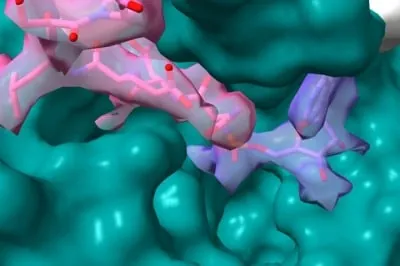
Groundbreaking Research Unveils Iron's Critical Role in Earth’s Core Dynamics
2025-01-23
Author: John Tan
In an exciting development for geoscience, researchers have made significant strides in understanding how iron behaves under the Earth’s extreme core conditions. As a fundamental element of the Earth's core, the study focused on iron's melting temperature and phase stability in environments that closely resemble those at the Earth's center.
Utilizing cutting-edge technology, advanced experiments employing ultrafast X-ray absorption spectroscopy have uncovered remarkable insights into the structural and thermal properties of iron. These breakthroughs could reshape our understanding of Earth’s internal makeup and the geodynamic processes that have influenced the planet’s evolution over millions of years.
Advanced Iron Studies with X-ray Spectroscopy
A recent research endeavor published in *Physical Review Letters* features collaboration among researchers from the European Synchrotron Radiation Facility (ESRF) in Grenoble, France, and various global institutes. This pioneering research investigated the microscopic behavior of iron under high-pressure and high-temperature conditions, conducted at ESRF's High-Power Laser Facility. By combining high-powered lasers with ultrafast X-ray absorption techniques, scientists mapped out the phase diagram for iron under extreme conditions.
Lead researcher Sofia Balugani emphasized the study's critical goal: to define iron's melting curve and observe structural changes at pressures reaching a staggering 240 GPa. These conditions are akin to those found near the boundary of the Earth's inner core, offering vital clues about the transition from the liquid outer core to the solid inner core.
Key Discoveries and Their Implications for Earth Sciences
The study identified that, at 240 GPa and approximately 5,345 K, iron adopts a hexagonal close-packed (hcp) structure just before melting—a surprising deviation from previous theories that suggested a body-centered cubic (bcc) structure was more likely. This revelation highlights the complexities of iron under such extreme conditions and signals a need for revised models in geosciences.
Furthermore, the research introduced a novel approach for determining the bulk temperatures of metals subjected to extreme environments, leveraging the capabilities of X-ray absorption spectroscopy. This method not only enhances scientific understanding but also paves the way for future studies aimed at unraveling the mysteries of Earth's interior.
Why This Research Matters
As scientists continue to probe deeper into our planet's mysteries, findings like these have far-reaching implications. Understanding iron's behavior at core-like conditions can shed light on the processes driving geodynamic phenomena such as earthquakes, volcanic activity, and even the Earth's magnetic field.
With this groundbreaking study, researchers are one step closer to piecing together the intricate puzzle of Earth's internal dynamics. Stay tuned for more updates as we uncover the secrets hidden within our planet's core!




 Brasil (PT)
Brasil (PT)
 Canada (EN)
Canada (EN)
 Chile (ES)
Chile (ES)
 Česko (CS)
Česko (CS)
 대한민국 (KO)
대한민국 (KO)
 España (ES)
España (ES)
 France (FR)
France (FR)
 Hong Kong (EN)
Hong Kong (EN)
 Italia (IT)
Italia (IT)
 日本 (JA)
日本 (JA)
 Magyarország (HU)
Magyarország (HU)
 Norge (NO)
Norge (NO)
 Polska (PL)
Polska (PL)
 Schweiz (DE)
Schweiz (DE)
 Singapore (EN)
Singapore (EN)
 Sverige (SV)
Sverige (SV)
 Suomi (FI)
Suomi (FI)
 Türkiye (TR)
Türkiye (TR)
 الإمارات العربية المتحدة (AR)
الإمارات العربية المتحدة (AR)